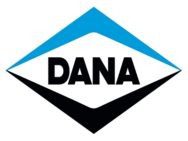 There are many advantages to using heavy machinery. In the modern world, we are coming to depend more and more on things like heavy duty transmissions and other industrial machinery. Let’s look at some of the top reasons why so many people appreciate this type of technology.
There are many advantages to using heavy machinery. In the modern world, we are coming to depend more and more on things like heavy duty transmissions and other industrial machinery. Let’s look at some of the top reasons why so many people appreciate this type of technology.
1. Greater Productivity
There is no question that industrial machinery makes many tasks faster and more efficient. The same job that might take days or several people to accomplish can be done in hours or even minutes using the right equipment. Whether they are being used for business or leisure activities, this type of machinery allows you to be far more productive in many ways.
2. Cost Effectiveness
Because they allow you to accomplish so much more in less time, these devices save you money. There is the initial cost of purchasing them and then they must be properly maintained, however, with the right care, they save money in terms of time and labor costs. This helps businesses earn higher profits.
3. LESS PHYSICAL LABOR
Operating heavy machinery is far less taxing on the human body than using other types of tools. Aside from the economic benefits, people with access to this type of machinery don’t have to work as hard physically. This translates into shorter workdays and more leisure time.
4. The ability to accomplish the amazing
One of the reasons we all love heavy duty machines is that they embody the potential to accomplish amazing feats of construction, excavation and demolition that have never before been possible. Manpower has been used to accomplish great feats, including the construction of the Pyramids and the Great Wall of China, but modern technology allows massive undertakings in rapid time.
5. They’re just so cool!
Many people appreciate this type of machinery simply for its power and aesthetic qualities, in addition to the many practical benefits it can add to your life. This is why many people enjoy trade shows that feature such equipment or browsing through magazines, product catalogs or websites that feature it.
The above are some of the top reasons why heavy machinery is so widely admired. It can be advantageous to everyone, from workers to business owners. If you are looking for repair work, or new clutch or transmission parts for your heavy machinery, look no further!
Contact Us
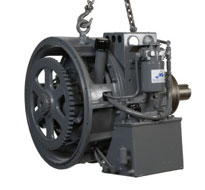
Torque converters take the place of clutches in heavy machinery and vehicles with automatic transmissions. The converters allow the motor to idle while the vehicle is stopped. A second use for converters is to supply increased torque when the motor is being revved up. This second use is especially beneficial for heavy duty motors for construction or industrial uses.
Parts of a converter
The main parts of torque converters are the housing, impeller, turbine, stator, and transmission fluid. The impeller, turbine, and stator are discs with attached vanes. The vanes are used to direct the flow of the transmission fluid. An industrial converter may employ a series of discs with attached fins to deliver a higher torque multiplier.
How converters operate
Converters provide a fluid coupling between a motor and its load. The initial load usually is a transmission. The transmission, in turn, may power the tires of a vehicle, the propeller of a boat, or industrial machinery.
When the motor is being accelerated, the motor RPM will exceed the transmission RPM. Under these conditions, the converter needs to allow slippage. The converter will also be multiplying the torque received from the motor. As the motor achieves its peak power RPM, the transmission RPM will catch up. At this stage, the converter no longer needs to allow slippage. A lockup clutch may then be triggered to connect the motor directly to the transmission. This matching speed is referred to as the converter’s stall speed. The stall speed (RPM) is frequently one of the main requirements considered when choosing a suitable converter
Twin Disc torque converters
Twin Disc converters are some of the most popular in the heavy machinery world, and can be used with farm tractors, road pavers, cranes, mining trucks, oil-rigs, logging equipment, mission-critical vehicles, watercraft, pumps, and turbines. These converters can handle diesel motors from 30 to 3500 hp.
The company also can provide stripped units for manufacturers who want to provide their own driveline assembly. The company also can provide a modulated input clutch to divide power between PTO drives and torque converters.
Clark torque converter
The Clark torque converter is manufactured for heavy-duty use in industrial applications, as well as custom-built high-performance vehicles, circle track race-cars, and drag racing cars. They can also provide “one-of-a-kind” or prototype converters.
They use a computer controlled manufacturing process and top grade materials and can maintain the precision of most parts to within 0.001 inch. In addition, they have a customer service staff of over 30 people, standing behind their product.
Manitowoc torque converter
The Manitowoc torque converter uses industrial-strength components. The company has years of experience producing and servicing heavy duty, durable equipment. They also manufacture cranes, implementing the Vicon system which uses a constant speed motor to drive two torque converters. This eliminates the need for clutches and brakes.
We’re obviously big fans of torque converters, and we’ll go above and beyond to ensure that yours is installed correctly, and running efficiently.
Contact Us
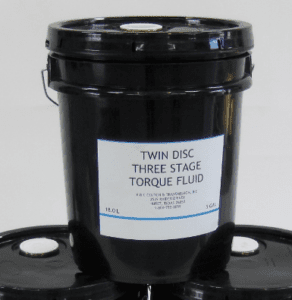 Our goal with this post is a general overview of Torque Fluid, we won’t be delving into any quantum physics, so if you’re a super advanced reader, you may be looking for something more in-depth. If you’re looking for a more general understanding of how torque fluid works, you’ve come to the right place!
Our goal with this post is a general overview of Torque Fluid, we won’t be delving into any quantum physics, so if you’re a super advanced reader, you may be looking for something more in-depth. If you’re looking for a more general understanding of how torque fluid works, you’ve come to the right place!
What is Torque Fluid?
Maybe you have heard of the term “torque fluid” and were curious as to what it was used for and what it does. Torque fluid is the hydraulic fluid used in a torque converter. The viscosity (or how thick or “runny” the liquid is) helps to transfer the pressure and makes the conversion process more effective. While this may be great for heavy-duty machinery, such as construction equipment, it isn’t always what you would want in machines with less weight, like your car. The thicker the fluid is, the more energy it transfers from one part of the transmission to another. Read Full Article →
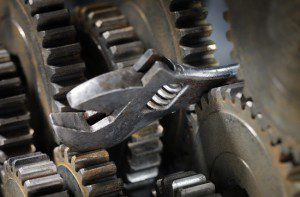 There are a huge number of different transmissions being put to use in a wide variety of simple and complex machinery. Each model uses different types of transmission designs to convert power and drive the engine. With each variety of system comes different abilities and, of course, their own set of unique problems. The most uncommon transmissions are those being put to use in heavy machinery such as hydrostatic transmissions, hydrodynamic systems, and electric transmissions. In each of these cases, the transmission system is essentially converting power from its source for transmission into various gears and components. This transmission mechanism differs accordingly. In virtually all cases, however, the clutch and transmission of a vehicle will be intricately related, controlling the transition between gears which are responsible for transferring power. The number of gears and precise machining necessary for a clutch and transmission to work together properly ends up becoming the source of a great many problems in the engine as a whole. Read Full Article →
There are a huge number of different transmissions being put to use in a wide variety of simple and complex machinery. Each model uses different types of transmission designs to convert power and drive the engine. With each variety of system comes different abilities and, of course, their own set of unique problems. The most uncommon transmissions are those being put to use in heavy machinery such as hydrostatic transmissions, hydrodynamic systems, and electric transmissions. In each of these cases, the transmission system is essentially converting power from its source for transmission into various gears and components. This transmission mechanism differs accordingly. In virtually all cases, however, the clutch and transmission of a vehicle will be intricately related, controlling the transition between gears which are responsible for transferring power. The number of gears and precise machining necessary for a clutch and transmission to work together properly ends up becoming the source of a great many problems in the engine as a whole. Read Full Article →
 Like the majority of the inventions throughout history, the torque converter arose out of a desire for convenience and efficiency. It became apparent to designers that internal combustion engines were not transferring the full amount of power being produced into used energy. On top of this fact, the torque of the engine was only be controlled in a rudimentary fashion. In order to solve the problem, the torque converter came into existence. They first enjoyed widespread use in locomotives and strictly diesel units. However, as the advantages of the torque converter became apparent, it began to be installed in vehicles of all sizes and levels of complexity. The invention of the automatic transmission for cars and trucks is when the invention really hit its stride. With the popularity of this form of transmission, there was also a great deal of incentive to develop the technology that was governing the device’s performance.
Like the majority of the inventions throughout history, the torque converter arose out of a desire for convenience and efficiency. It became apparent to designers that internal combustion engines were not transferring the full amount of power being produced into used energy. On top of this fact, the torque of the engine was only be controlled in a rudimentary fashion. In order to solve the problem, the torque converter came into existence. They first enjoyed widespread use in locomotives and strictly diesel units. However, as the advantages of the torque converter became apparent, it began to be installed in vehicles of all sizes and levels of complexity. The invention of the automatic transmission for cars and trucks is when the invention really hit its stride. With the popularity of this form of transmission, there was also a great deal of incentive to develop the technology that was governing the device’s performance.
Read Full Article →
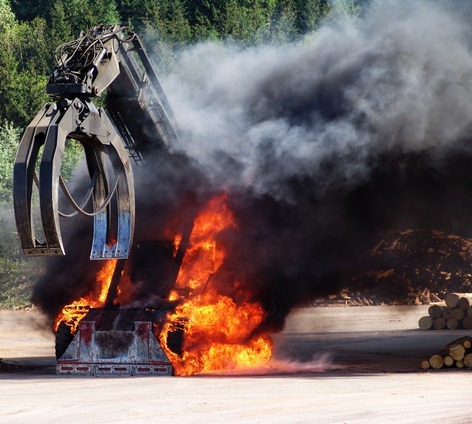 Our industrial product distributor experts explain why machines need oil coolers and heat exchangers.
Our industrial product distributor experts explain why machines need oil coolers and heat exchangers.
Texas is hot. So are many of the places where our parts and workers find themselves. Even in cool weather, cranes, tractors, front-end loaders, and all other large machines, expel a large amount of energy to do their jobs. If you remember much from grade-school science, or if you happened to study the subject in some sort of advanced degree, you know that heat is energy. All that energy makes those machines pretty hot.
Read Full Article →
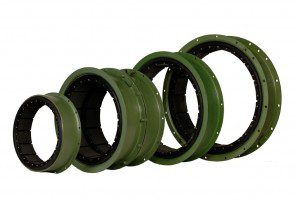 Ever wondered how air clutches work? K&L Clutch and Transmission has the expert answer!
Ever wondered how air clutches work? K&L Clutch and Transmission has the expert answer!
An industrial air clutch for heavy machinery performs a very important job in relation to an engine and how power or torque is transferred. A typical engine has an output shaft as can be seen on an automobile engine at the flywheel position. A clutch is a device, usually a system of plates or grabbing disks that engage the power from the flywheel and transfer it to the transmission. A PTO, or power takeoff shaft, performs the same function and is commonly found on heavy construction equipment or farm machinery. The engine clutch engages with the PTO shaft so that it may spin or drive another component, like a tiller or peripheral device. Compressed air is used to engage or disengage the engine from the driven component, rather than using hydraulic (oil) or centrifugal force.
Read Full Article →
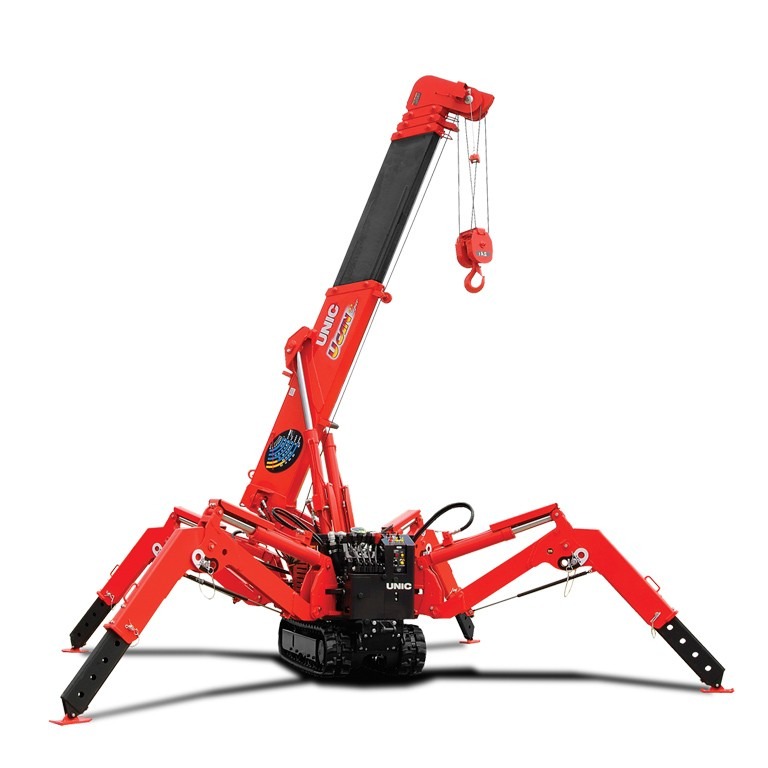
Image courtesy of unic-cranes.co.uk
Typically we provide clutch and transmission services for some of the world’s largest and most powerful cranes. Our crane parts, clutches, transmissions, power take-offs, torque converters and brakes can be found doing work in a wide range of countries for a variety of jobs. But sometimes jobs on a smaller scale are still too much for us to do without some assistance. For those jobs, a large crane may be too much. For some of those jobs, a large crane may not even fit.
UNIC Cranes Europe claims to have “the world’s most compact mini cranes,” and it seems like they’re right. The company, based in England, has engineered and built some of the most impressive cranes on the market. Their cranes, which they call “spider cranes,” are small, light, durable and able to reach areas that are typically very difficult to access.
Read Full Article →
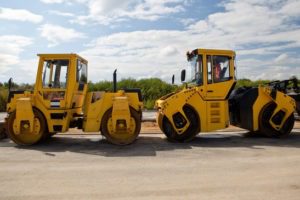 If you’re here, it’s likely you don’t just have a passing interest in industrial power take-offs. You’ve either used a PTO before or are planning to use one soon. And if you’re using PTOs, you know that there is a wide range of types and brands that can be installed and utilized for various powerful machines.
If you’re here, it’s likely you don’t just have a passing interest in industrial power take-offs. You’ve either used a PTO before or are planning to use one soon. And if you’re using PTOs, you know that there is a wide range of types and brands that can be installed and utilized for various powerful machines.
Read Full Article →
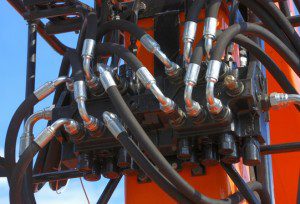 Water is considered one of the most important elements in nature. The prevalence of water (it covers over 70% of the earth) and it’s fundamental role in survival results in it being one of the most studied and versatile substances in existence. Humanity has figured out many ways to utilize the potential that water has, from impressive dams and turbines producing hydroelectric power to squeezing it into small pipes and spaces to provide cooling for engines. Water isn’t the only important fluid with industrial applications – another substance that has become increasingly important and adaptable is hydraulic fluid, which is an essential element in the function of industrial torque converters.
Water is considered one of the most important elements in nature. The prevalence of water (it covers over 70% of the earth) and it’s fundamental role in survival results in it being one of the most studied and versatile substances in existence. Humanity has figured out many ways to utilize the potential that water has, from impressive dams and turbines producing hydroelectric power to squeezing it into small pipes and spaces to provide cooling for engines. Water isn’t the only important fluid with industrial applications – another substance that has become increasingly important and adaptable is hydraulic fluid, which is an essential element in the function of industrial torque converters.
Read Full Article →
Page 6 of 11« First«...45678...»Last »
 There are many advantages to using heavy machinery. In the modern world, we are coming to depend more and more on things like heavy duty transmissions and other industrial machinery. Let’s look at some of the top reasons why so many people appreciate this type of technology.
There are many advantages to using heavy machinery. In the modern world, we are coming to depend more and more on things like heavy duty transmissions and other industrial machinery. Let’s look at some of the top reasons why so many people appreciate this type of technology.
 Our goal with this post is a general overview of Torque Fluid, we won’t be delving into any quantum physics, so if you’re a super advanced reader, you may be looking for something more in-depth. If you’re looking for a more general understanding of how torque fluid works, you’ve come to the right place!
Our goal with this post is a general overview of Torque Fluid, we won’t be delving into any quantum physics, so if you’re a super advanced reader, you may be looking for something more in-depth. If you’re looking for a more general understanding of how torque fluid works, you’ve come to the right place! There are a huge number of different transmissions being put to use in a wide variety of simple and complex machinery. Each model uses different types of transmission designs to convert power and drive the engine. With each variety of system comes different abilities and, of course, their own set of unique problems. The most uncommon transmissions are those being put to use in heavy machinery such as hydrostatic transmissions, hydrodynamic systems, and electric transmissions. In each of these cases, the transmission system is essentially converting power from its source for transmission into various gears and components. This transmission mechanism differs accordingly. In virtually all cases, however, the clutch and transmission of a vehicle will be intricately related, controlling the transition between gears which are responsible for transferring power. The number of gears and precise machining necessary for a
There are a huge number of different transmissions being put to use in a wide variety of simple and complex machinery. Each model uses different types of transmission designs to convert power and drive the engine. With each variety of system comes different abilities and, of course, their own set of unique problems. The most uncommon transmissions are those being put to use in heavy machinery such as hydrostatic transmissions, hydrodynamic systems, and electric transmissions. In each of these cases, the transmission system is essentially converting power from its source for transmission into various gears and components. This transmission mechanism differs accordingly. In virtually all cases, however, the clutch and transmission of a vehicle will be intricately related, controlling the transition between gears which are responsible for transferring power. The number of gears and precise machining necessary for a  Like the majority of the inventions throughout history, the torque converter arose out of a desire for convenience and efficiency. It became apparent to designers that internal combustion engines were not transferring the full amount of power being produced into used energy. On top of this fact, the torque of the engine was only be controlled in a rudimentary fashion. In order to solve the problem, the torque converter came into existence. They first enjoyed widespread use in locomotives and strictly diesel units. However, as the advantages of the torque converter became apparent, it began to be installed in vehicles of all sizes and levels of complexity. The invention of the automatic transmission for cars and trucks is when the invention really hit its stride. With the popularity of this form of transmission, there was also a great deal of incentive to develop the technology that was governing the device’s performance.
Like the majority of the inventions throughout history, the torque converter arose out of a desire for convenience and efficiency. It became apparent to designers that internal combustion engines were not transferring the full amount of power being produced into used energy. On top of this fact, the torque of the engine was only be controlled in a rudimentary fashion. In order to solve the problem, the torque converter came into existence. They first enjoyed widespread use in locomotives and strictly diesel units. However, as the advantages of the torque converter became apparent, it began to be installed in vehicles of all sizes and levels of complexity. The invention of the automatic transmission for cars and trucks is when the invention really hit its stride. With the popularity of this form of transmission, there was also a great deal of incentive to develop the technology that was governing the device’s performance. Our industrial product distributor experts explain why machines need oil coolers and heat exchangers.
Our industrial product distributor experts explain why machines need oil coolers and heat exchangers. Ever wondered how air clutches work? K&L Clutch and Transmission has the expert answer!
Ever wondered how air clutches work? K&L Clutch and Transmission has the expert answer!
 If you’re here, it’s likely you don’t just have a passing interest in
If you’re here, it’s likely you don’t just have a passing interest in  Water is considered one of the most important elements in nature. The prevalence of water (it covers over 70% of the earth) and it’s fundamental role in survival results in it being one of the most studied and versatile substances in existence. Humanity has figured out many ways to utilize the potential that water has, from impressive dams and turbines producing hydroelectric power to squeezing it into small pipes and spaces to provide cooling for engines. Water isn’t the only important fluid with industrial applications – another substance that has become increasingly important and adaptable is hydraulic fluid, which is an essential element in the function of
Water is considered one of the most important elements in nature. The prevalence of water (it covers over 70% of the earth) and it’s fundamental role in survival results in it being one of the most studied and versatile substances in existence. Humanity has figured out many ways to utilize the potential that water has, from impressive dams and turbines producing hydroelectric power to squeezing it into small pipes and spaces to provide cooling for engines. Water isn’t the only important fluid with industrial applications – another substance that has become increasingly important and adaptable is hydraulic fluid, which is an essential element in the function of 